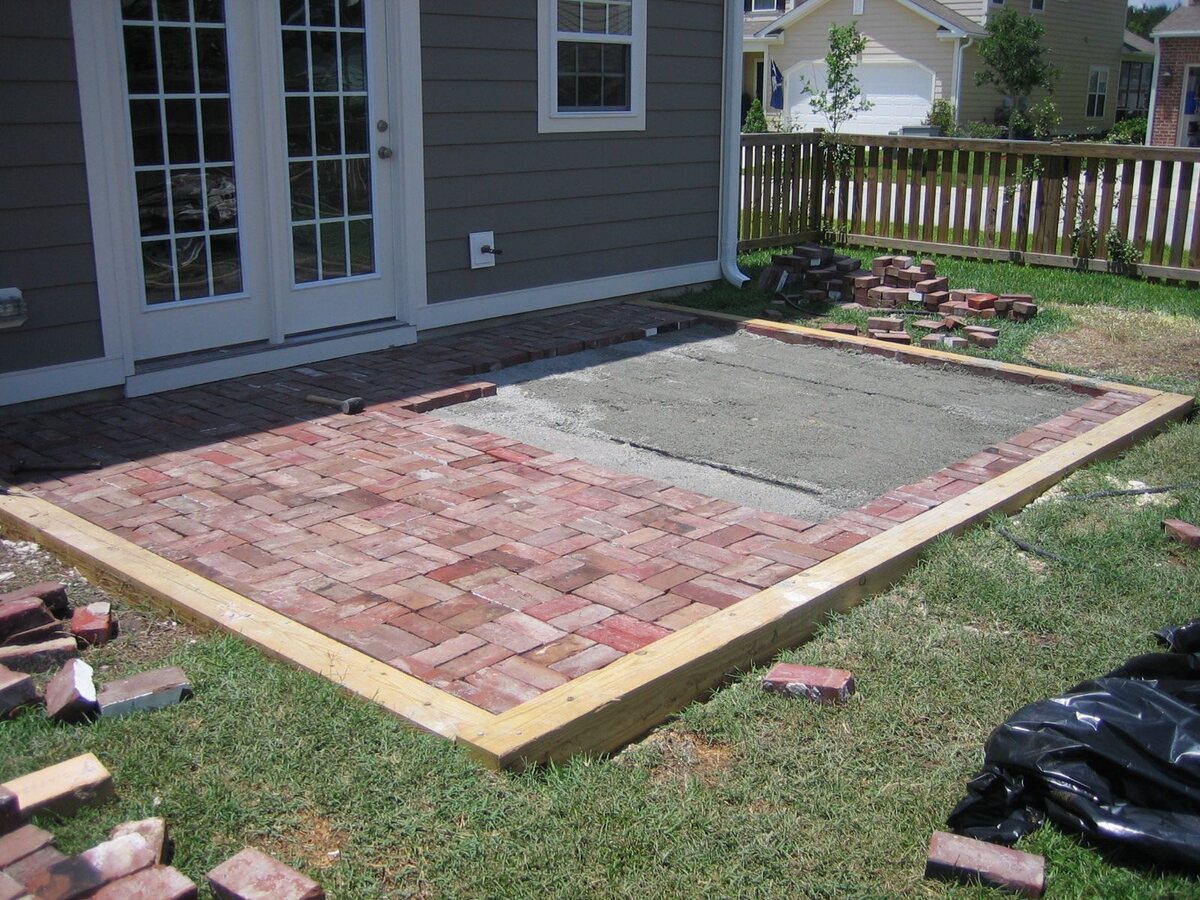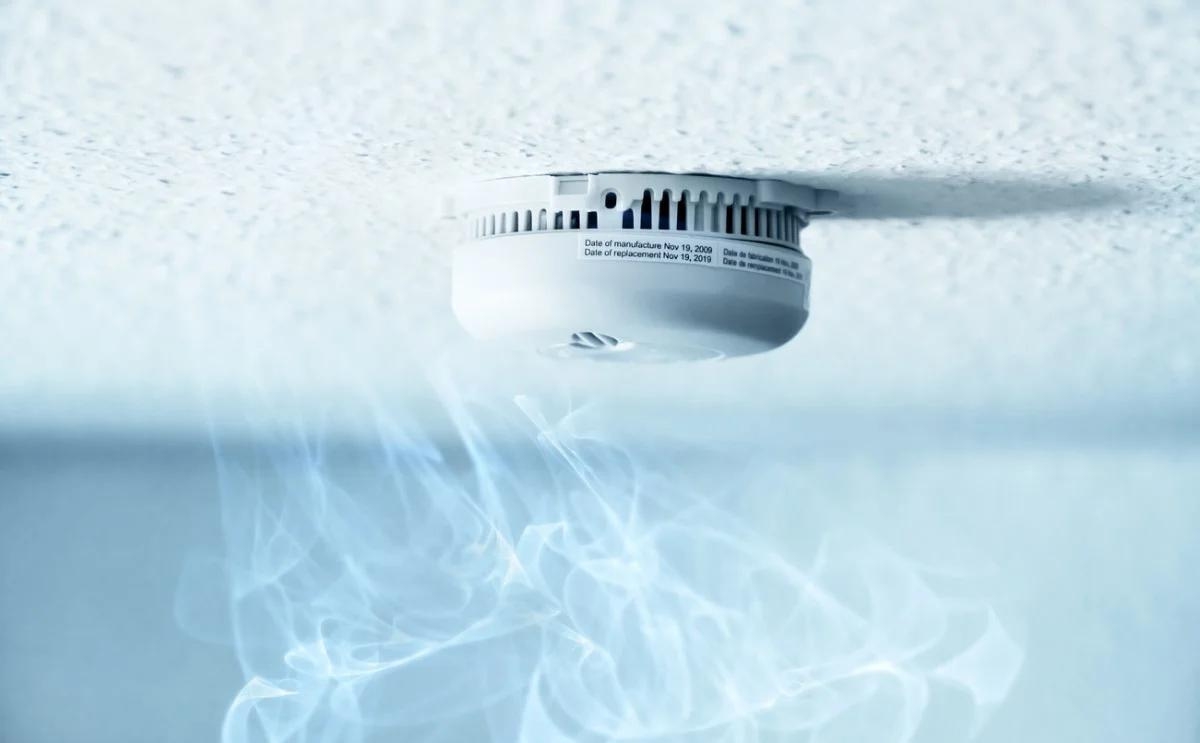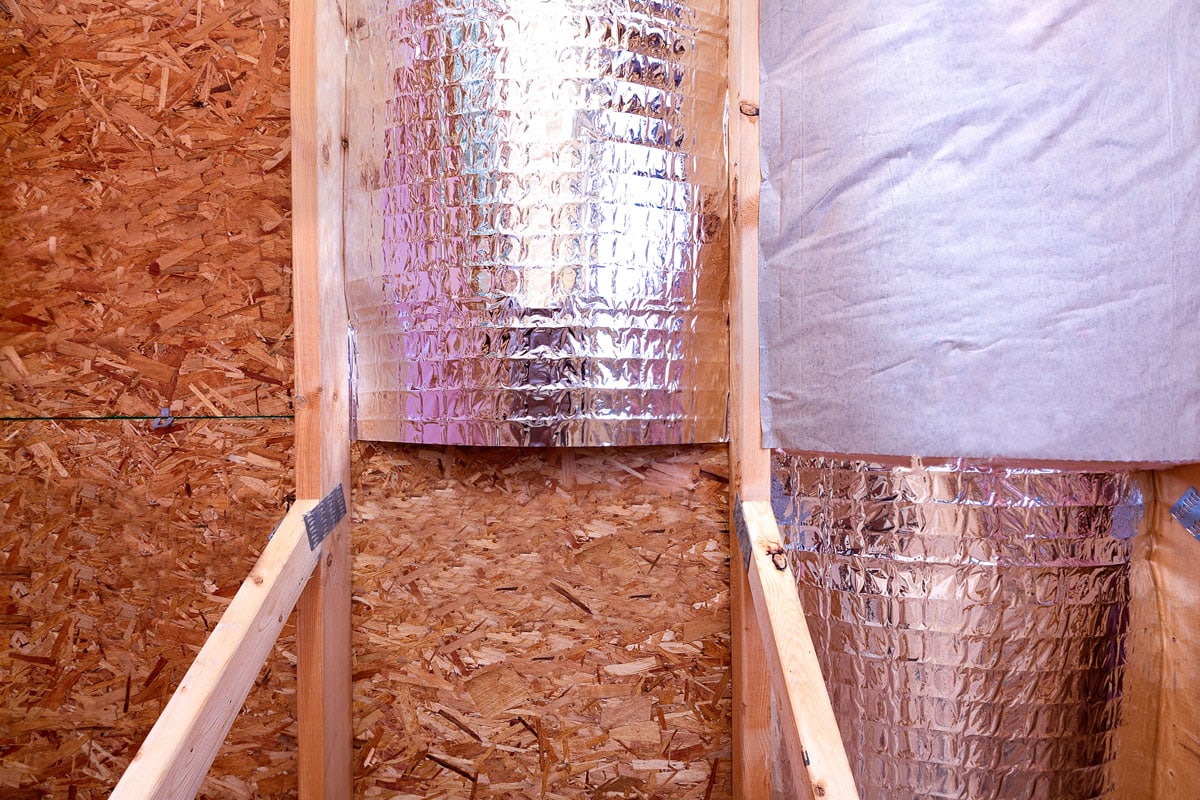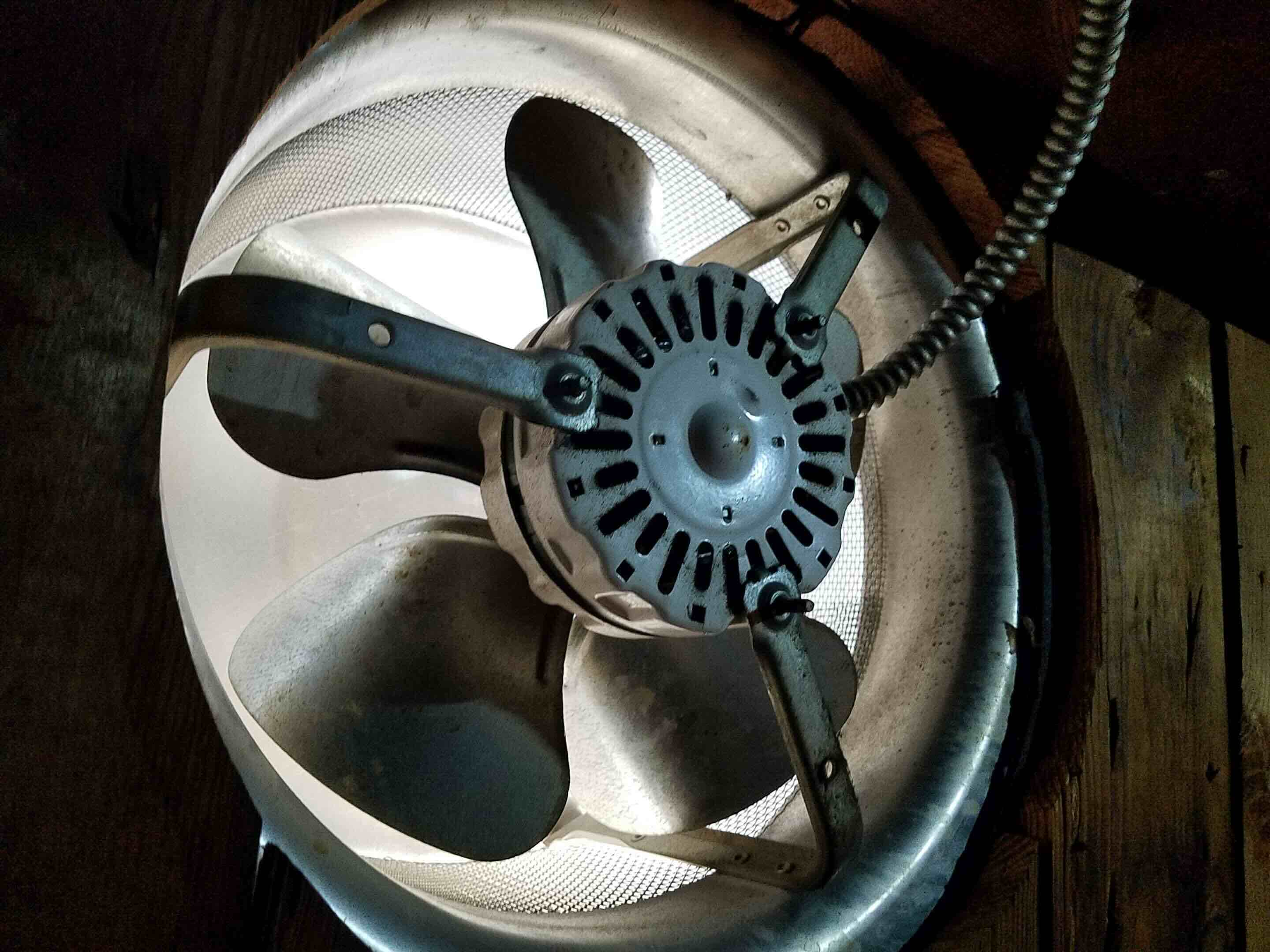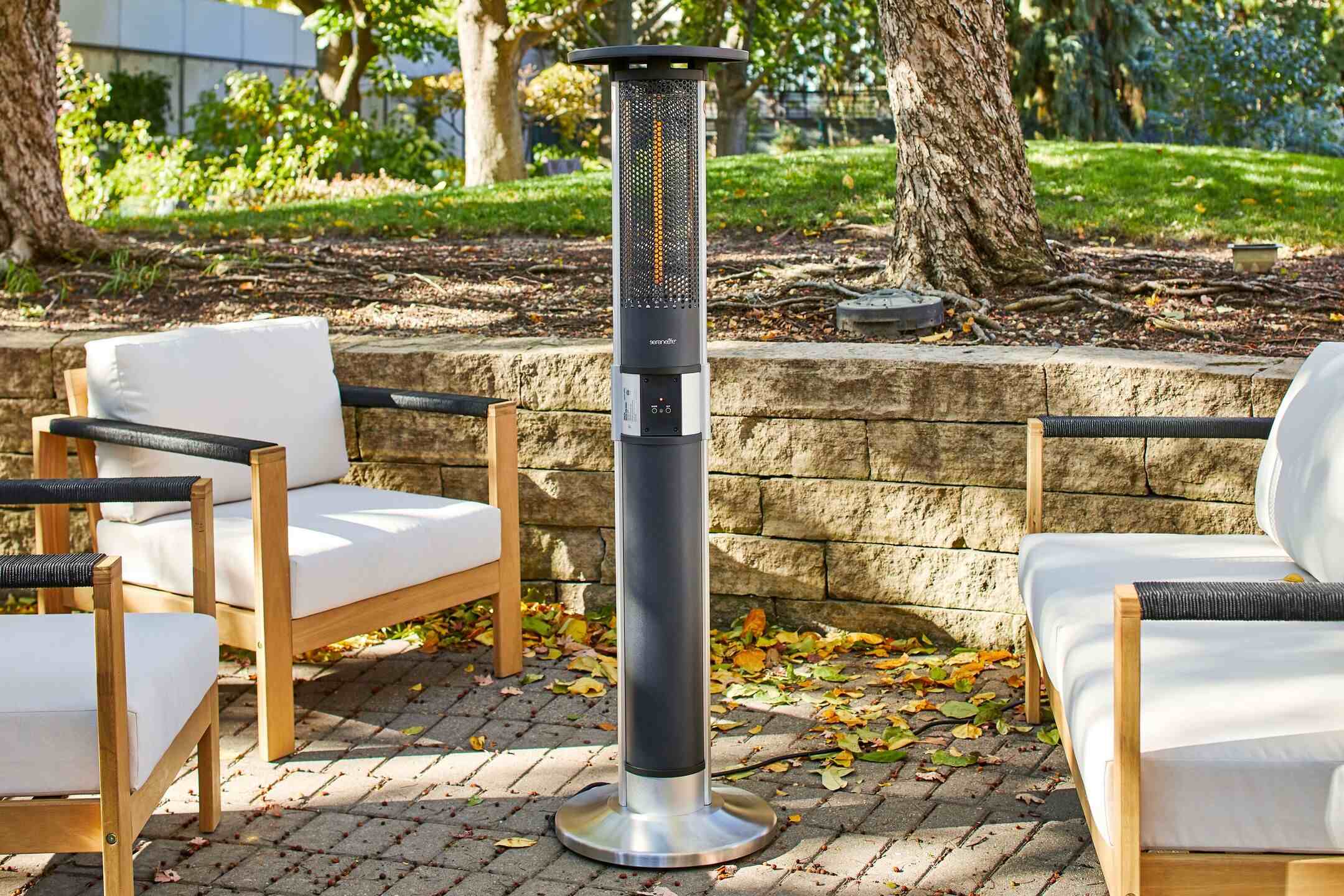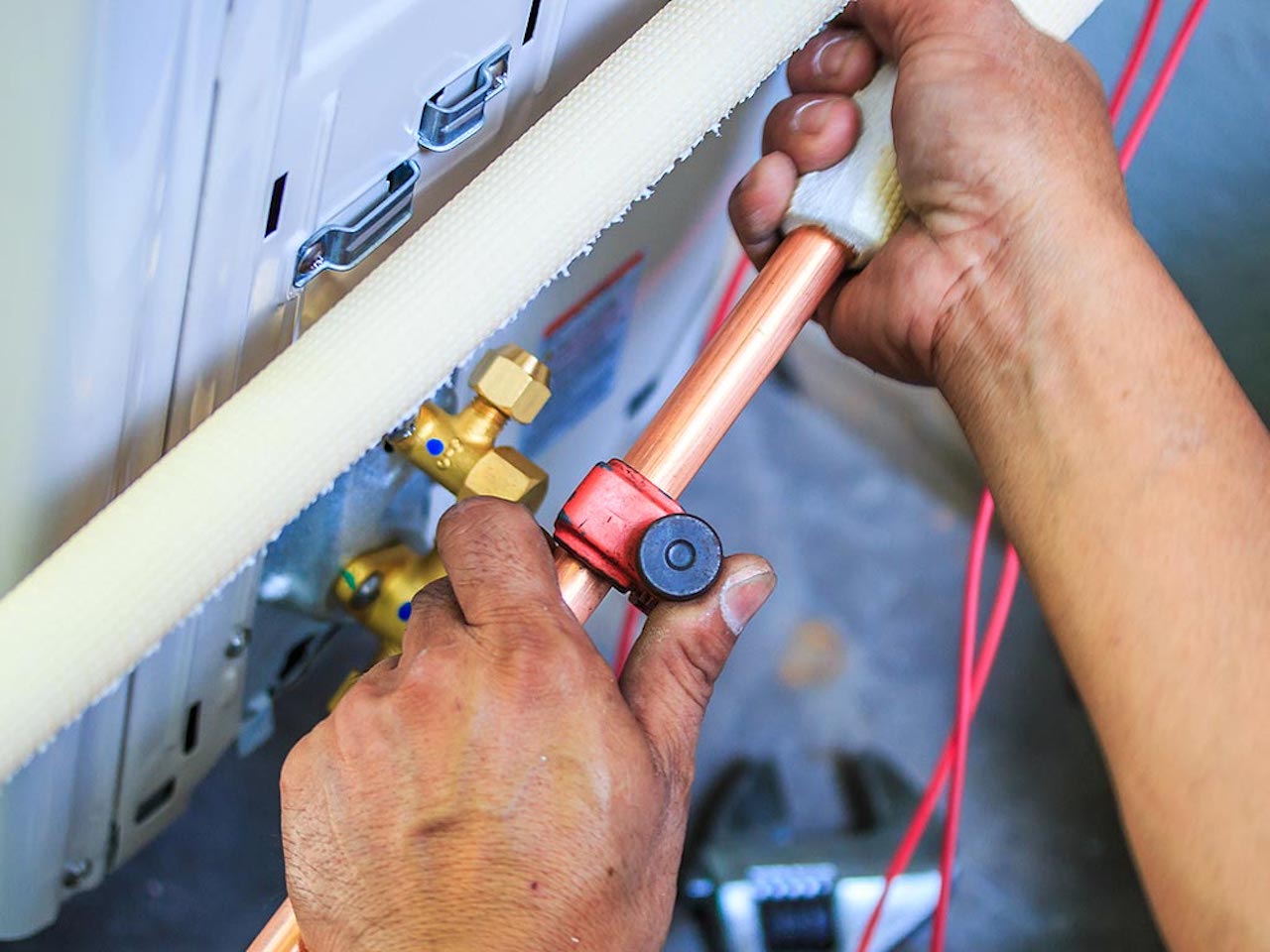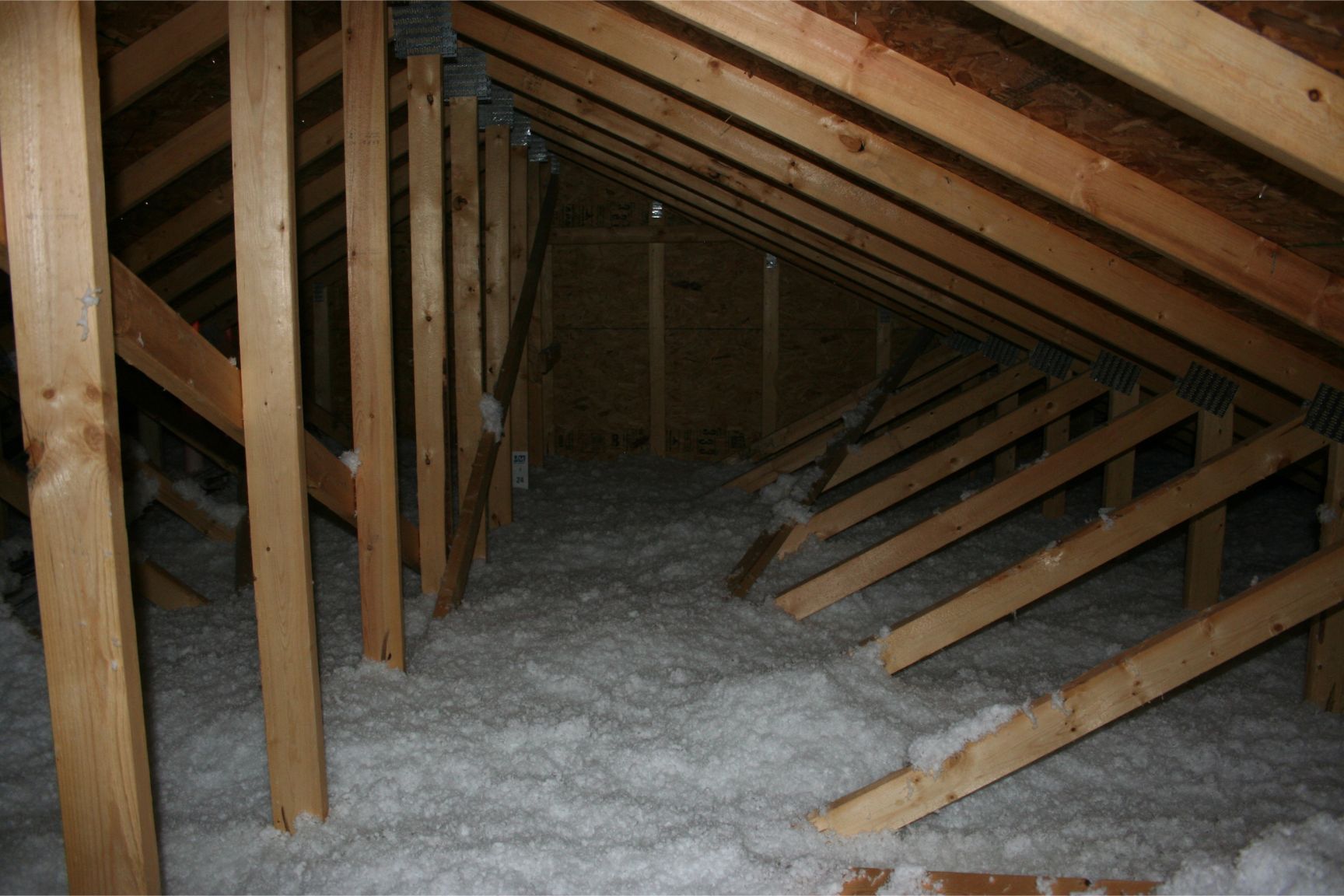Home>Home Security and Surveillance>How Many Terabytes Do I Need For The Average Home CCTV System
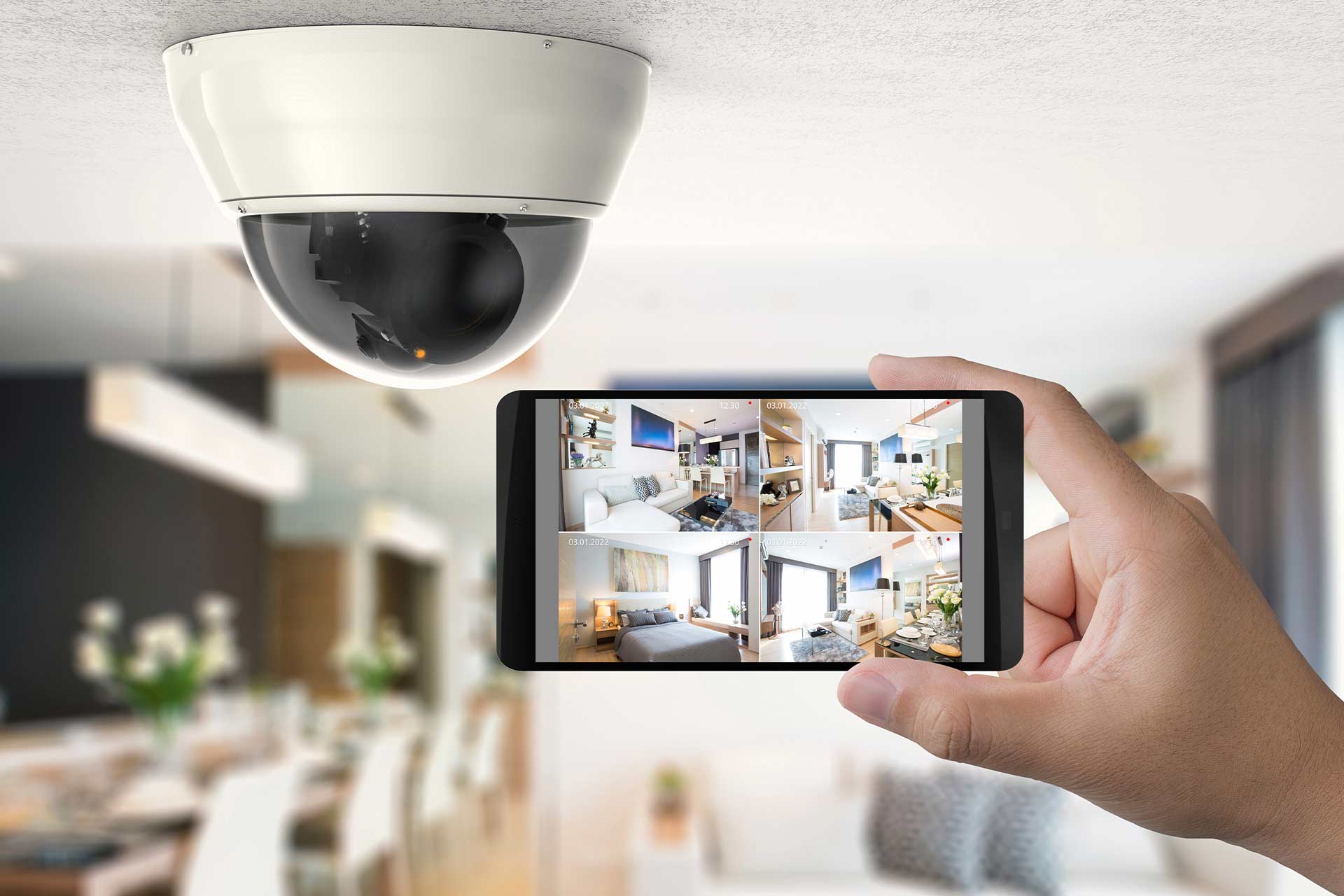

Home Security and Surveillance
How Many Terabytes Do I Need For The Average Home CCTV System
Modified: March 6, 2024
Discover how to determine the ideal amount of terabytes for your home security and surveillance system. Ensure optimal storage capacity with expert advice.
(Many of the links in this article redirect to a specific reviewed product. Your purchase of these products through affiliate links helps to generate commission for Storables.com, at no extra cost. Learn more)
Introduction
Ensuring the safety of our homes and loved ones is a top priority for many homeowners. One of the most effective ways to achieve this is by installing a CCTV (Closed-circuit television) system. A home CCTV system provides round-the-clock surveillance and enables homeowners to monitor their property from anywhere at any time. However, when setting up a home CCTV system, one common question arises: how many terabytes of storage do I need?
The amount of storage required for a home CCTV system depends on several factors, such as the number of cameras, video resolution, recording duration, and the type of storage technology employed. To better understand how much storage you need, let’s delve into the key factors that go into determining storage requirements for a home CCTV system.
Key Takeaways:
- Determine your home CCTV system’s storage needs by considering factors like the number of cameras, video resolution, and recording duration. Strike a balance between quality and space to keep your property secure.
- Explore storage options like Network Attached Storage (NAS) and Cloud Storage for flexible and accessible solutions. Consider factors such as cost, security, and scalability when choosing the right storage for your home CCTV system.
Factors to Consider for a Home CCTV System
When planning a home CCTV system, it’s crucial to consider several factors that will impact the amount of storage needed. By understanding these factors, you can make an informed decision about the storage capacity required for your specific needs. Here are the key factors to consider:
- Number of cameras: The more cameras you have in your system, the more storage space you’ll need. Each camera captures and records video footage, which increases the storage requirements.
- Video resolution: The resolution of your CCTV system determines the level of detail captured in the recorded footage. Higher resolution cameras, such as 4K, produce sharper and more detailed images but also result in larger file sizes and increased storage needs.
- Recording duration: How long would you like to retain the recorded footage? The recording duration will impact the amount of storage required. If you want to keep video recordings for longer periods, you’ll need a larger storage capacity.
- Compression methods and bitrates: Modern CCTV systems employ various compression methods to reduce the size of video files without compromising image quality. By utilizing efficient compression techniques and adjusting the bitrate settings, you can optimize storage usage.
- Hard drive types and capacities: The type and capacity of the hard drive used in your CCTV system play a crucial role in determining storage capabilities. Solid-state drives (SSDs) offer faster access to data but come at a higher cost per terabyte compared to traditional hard disk drives (HDDs).
By carefully considering these factors, you can estimate the storage requirements for your home CCTV system. In the next sections, we’ll explore how video resolution and file size, recording duration and storage requirements, and the number of cameras and channels can influence your storage needs.
Video Resolution and File Size
The video resolution of your CCTV system plays a significant role in determining the file size of recorded footage and, subsequently, the storage requirements. Higher-resolution cameras produce more detailed and clearer images, but they also generate larger video files.
Common video resolutions for CCTV cameras include 720p (HD), 1080p (Full HD), and 4K Ultra HD. The higher the resolution, the more storage space is needed to store the video files.
For example, a 720p video typically requires around 0.5-1.5 GB of storage per hour of recording, while a 1080p video can range from 1.5-4 GB per hour. When it comes to 4K Ultra HD, the file sizes can go up to 8-12 GB per hour. These estimates can vary depending on factors like compression settings, bitrates, and the complexity of the video footage.
To strike a balance between video quality and storage space, you can consider using cameras with variable resolution settings. This allows you to adjust the resolution based on your needs. For instance, you might choose to use higher resolutions for critical areas such as entrances or main living spaces and lower resolutions for less significant areas.
It’s important to note that lower video resolutions can result in decreased image quality and may impact the ability to identify specific details in the footage. Therefore, ensure you find the right balance between video resolution, storage requirements, and the level of detail you desire from your CCTV system.
Recording Duration and Storage Requirements
The recording duration of your CCTV system is another essential factor that directly impacts the storage requirements. How long do you want to retain your recorded footage before it is overwritten or deleted? The longer the recording duration, the more storage space you will need.
When determining the recording duration, consider factors such as your specific security needs, legal requirements, and the frequency at which you can review and offload the footage. It’s important to strike a balance between having enough storage to meet your needs and not wasting storage space by retaining unnecessary footage for extended periods.
One common approach is to use motion-triggered recording. This means the cameras only start recording when they detect motion, reducing the amount of footage that needs to be stored. However, it’s worth noting that motion-triggered recording may not capture events that occur outside the camera’s field of view before the motion is detected.
Furthermore, consider the option of scheduling specific recording periods. For instance, if you work during the day and are primarily concerned with nighttime security, you can schedule the cameras to record only during nighttime hours, thereby reducing the overall storage requirements.
By adjusting the recording duration based on your specific needs, you can optimize storage usage and ensure you have sufficient space to store the necessary footage.
Next, we will explore how the number of cameras and channels can affect your storage requirements in a home CCTV system.
Number of Cameras and Channels
The number of cameras and channels in your home CCTV system is a crucial factor that directly impacts the storage requirements. Each camera captures and records video footage, and each channel represents an input source for the recorded footage. The more cameras and channels you have, the more storage space you’ll need to accommodate the incoming video data.
Let’s consider an example: if you have four cameras in your CCTV system, each recording at 1080p resolution, you’ll need four times the amount of storage compared to a system with only one camera. Similarly, if you have a multi-channel DVR or NVR (Digital Video Recorder or Network Video Recorder), you’ll need to account for the storage capacity for each channel.
Keep in mind that the storage requirements increase exponentially as you add more cameras and channels. Therefore, it’s essential to consider your surveillance needs carefully and strike a balance between the number of cameras and the available storage capacity.
If you’re concerned about storage limitations, consider utilizing features such as scheduled recording, motion detection, or excluding certain less critical areas from surveillance. Additionally, by assessing the risk levels of different areas of your home, you can prioritize camera placement and allocate storage resources accordingly.
Remember, the number of cameras and channels directly affects storage requirements, so carefully consider your surveillance needs and available storage capacity when determining the number of cameras for your home CCTV system.
Next, we will discuss compression methods, bitrates, and how they impact storage requirements.
A good rule of thumb is to allocate 1TB of storage for every 30 days of footage from your home CCTV system. So, for a month’s worth of footage, you would need at least 1TB of storage. Keep in mind that this can vary depending on the number of cameras and their resolution.
Read more: How Many Tons HVAC Do I Need
Compression Methods and Bitrates
Compression methods and bitrates are crucial aspects of a home CCTV system that can significantly impact storage requirements. Modern CCTV systems use various compression methods to reduce the size of video files without compromising image quality.
Two commonly used compression methods are H.264 and H.265 (also known as High Efficiency Video Coding or HEVC). These compression standards significantly reduce the size of video files while maintaining good image quality.
Bitrate is another factor to consider when it comes to storage requirements. Bitrate refers to the amount of data processed per unit of time and is typically measured in kilobits per second (Kbps) or megabits per second (Mbps). Higher bitrates result in larger video files and, therefore, increased storage needs.
When setting up your CCTV system, you’ll have the flexibility to adjust the compression method and bitrate settings based on your requirements. It’s important to strike a balance between video quality and storage space. Higher compression and lower bitrates can save storage space but may come at the cost of slightly reduced image quality. Experimenting with different settings can help you find the optimal balance for your specific needs.
Some CCTV systems offer variable bitrate (VBR) or constant bitrate (CBR) options. VBR adjusts the bitrate dynamically based on the complexity of the video scene, while CBR maintains a constant bitrate throughout. VBR can help optimize storage utilization by reducing the bitrate during less complex scenes and increasing it during more detailed scenes.
By leveraging compression methods, adjusting bitrates, and utilizing VBR or CBR options, you can optimize the storage usage in your home CCTV system without compromising video quality.
Next, we will explore different types of hard drives and their capacities, which play a crucial role in determining the storage capabilities of your CCTV system.
Hard Drive Types and Capacities
The type and capacity of the hard drive in your CCTV system are essential factors when it comes to storage capabilities. There are two main types of hard drives commonly used in CCTV systems: traditional Hard Disk Drives (HDDs) and Solid-State Drives (SSDs).
Traditional Hard Disk Drives (HDDs) are widely used in CCTV systems due to their larger storage capacities at a more affordable price. HDDs use spinning disks and read/write heads to access and store data. They offer ample storage space, making them suitable for long-term storage of CCTV footage. However, they may not provide the same level of speed as SSDs.
On the other hand, Solid-State Drives (SSDs) are becoming increasingly popular for their faster data access and quieter operation. Unlike HDDs, SSDs have no moving parts and rely on flash memory technology, which allows for faster read and write speeds. SSDs are more reliable and energy-efficient but generally come at a higher cost compared to HDDs. They are ideal for situations where quick access to recorded footage is crucial.
When choosing a hard drive for your CCTV system, consider the required storage capacity based on the factors discussed earlier, such as video resolution, recording duration, and number of cameras. Hard drives are available in various capacities, typically ranging from terabytes (TB) to even multi-terabyte options.
For small or medium-sized home CCTV systems, a hard drive with a capacity of 1-4 TB is usually sufficient. However, if you have a large-scale surveillance setup or require an extended recording duration, you may opt for higher-capacity hard drives, such as 6-10 TB or more.
Remember to consider the needs of your specific CCTV system, including the number of cameras, video resolution, and desired recording duration, when selecting the hard drive capacity. It’s also worth noting that some DVRs or NVRs may allow for expandable storage, allowing you to add additional hard drives or utilize Network Attached Storage (NAS) options.
Next, we will explore the possibilities and considerations when it comes to using Network Attached Storage for your home CCTV system.
Network Attached Storage (NAS) Options
Network Attached Storage (NAS) provides a flexible and scalable solution for storing CCTV footage in a home surveillance system. NAS allows you to connect multiple storage drives to your network, providing centralized storage that can be accessed by multiple devices.
One of the key advantages of using NAS for your CCTV system is the ability to easily expand storage capacity as your needs grow. NAS devices typically support multiple hard drives and can be configured in various RAID (Redundant Array of Independent Disks) configurations for data redundancy and improved performance.
By utilizing NAS, you can store your CCTV footage directly on the network drives, reducing the load on individual DVRs or NVRs. This setup enables seamless access to the footage from multiple devices, such as computers, smartphones, or tablets, using the provided NAS software or apps.
When considering NAS options for your home CCTV system, pay attention to the specifications and capabilities of the NAS device. Look for features such as RAID support, network connectivity options (such as Ethernet or Wi-Fi), storage capacity, compatibility with your CCTV system, and user-friendly administration interfaces.
Determine the required storage capacity based on the factors we discussed earlier, such as video resolution, recording duration, and the number of cameras. Depending on your needs, you may start with a NAS device that has a few terabytes of storage capacity and expand it by adding more hard drives as your storage requirements grow.
It’s important to ensure proper security measures are in place when setting up NAS for your home CCTV system. Implementing strong network security protocols, such as password protection, encryption, and regular software updates, can help safeguard your CCTV footage from unauthorized access.
With the flexibility, scalability, and ease of access that NAS offers, it can be an ideal solution for storing and managing the footage from your home CCTV system.
Next, we will explore the option of utilizing cloud storage solutions for your CCTV system.
Cloud Storage Solutions
Cloud storage solutions offer an alternative option for storing CCTV footage from your home surveillance system. With cloud storage, your video files are securely stored on remote servers maintained by a third-party provider. This provides several benefits and considerations for home CCTV systems.
One of the key advantages of using cloud storage is the ability to access your CCTV footage from anywhere, as long as you have an internet connection. This means you can view live feeds and recorded footage on your computer or mobile devices, providing convenience and flexibility.
Cloud storage also offers scalability, as you can increase or decrease your storage capacity based on your needs. Most cloud storage providers offer different pricing plans and storage tiers, allowing you to choose the option that best fits your requirements.
However, it’s important to consider the potential limitations of using cloud storage for your CCTV system. One primary consideration is the cost, as cloud storage solutions may involve monthly or annual subscription fees based on the amount of storage used. Additionally, there may be bandwidth limitations and potential delays in accessing and retrieving footage, depending on your internet connection.
Security is another key consideration. When using cloud storage, your footage is stored on remote servers, and you rely on the provider’s security measures to protect your data. It’s essential to choose a reputable and trusted cloud storage provider that employs robust security protocols, such as data encryption and access controls.
Before opting for cloud storage, assess your internet connection speed and consider the total storage requirements of your CCTV system. Ensure that your internet bandwidth can handle the constant streaming and uploading of video footage to the cloud without negatively impacting other network activities.
Some cloud storage providers also offer additional features, such as motion detection alerts, AI-powered video analysis, and easy integration with mobile apps and smart home devices. These features can enhance the functionality and convenience of your home CCTV system.
Ultimately, the decision to use cloud storage for your CCTV system depends on your specific needs, budget, and preferences. It’s recommended to research and compare different cloud storage providers to find the one that offers the right balance of features, security, and cost for your home surveillance needs.
Now, let’s summarize and conclude our discussion on storage requirements for a home CCTV system.
Read more: How Many Btu AC Do I Need
Summary and Conclusion
Setting up a home CCTV system requires careful consideration of the storage requirements to ensure you have enough space to store your video footage. Several factors come into play when determining the storage capacity needed.
Firstly, the number of cameras and channels in your CCTV system directly impacts the storage requirements. Each camera captures and records video footage, increasing the overall storage space needed.
Video resolution also affects storage requirements. Higher resolutions, such as 1080p or 4K Ultra HD, result in larger file sizes and increased storage needs. Finding the right balance between video quality and storage space is crucial.
Recording duration is another factor to consider. How long you want to retain the recorded footage determines the storage capacity required. Motion-triggered recording and scheduled recording can help optimize storage usage.
Compression methods and bitrates play a significant role in storage requirements. Efficient compression techniques and adjusting bitrates can help reduce file sizes without compromising image quality.
When it comes to the storage technology itself, traditional Hard Disk Drives (HDDs) and Solid-State Drives (SSDs) are the main options. HDDs provide larger storage capacities at a more affordable price, while SSDs offer faster data access. Choose the type and capacity of the hard drive based on your specific needs.
Network Attached Storage (NAS) provides a flexible and scalable solution, allowing you to centralize storage and expand capacity as needed. Cloud storage solutions offer convenience and accessibility, but cost, bandwidth limitations, and security considerations should be taken into account.
In conclusion, determining the storage requirements for a home CCTV system involves considering factors such as the number of cameras, video resolution, recording duration, compression methods, and the type of storage technology. By carefully assessing these factors, you can ensure you have the right amount of storage capacity to meet your surveillance needs.
Remember to strike a balance between video quality and storage space, consider the specific requirements of your CCTV system, and choose storage options that best fit your budget and preferences.
With proper planning and consideration, you can set up a home CCTV system with the appropriate storage capacity to keep your property and loved ones safe and secure.
Frequently Asked Questions about How Many Terabytes Do I Need For The Average Home CCTV System
Was this page helpful?
At Storables.com, we guarantee accurate and reliable information. Our content, validated by Expert Board Contributors, is crafted following stringent Editorial Policies. We're committed to providing you with well-researched, expert-backed insights for all your informational needs.


